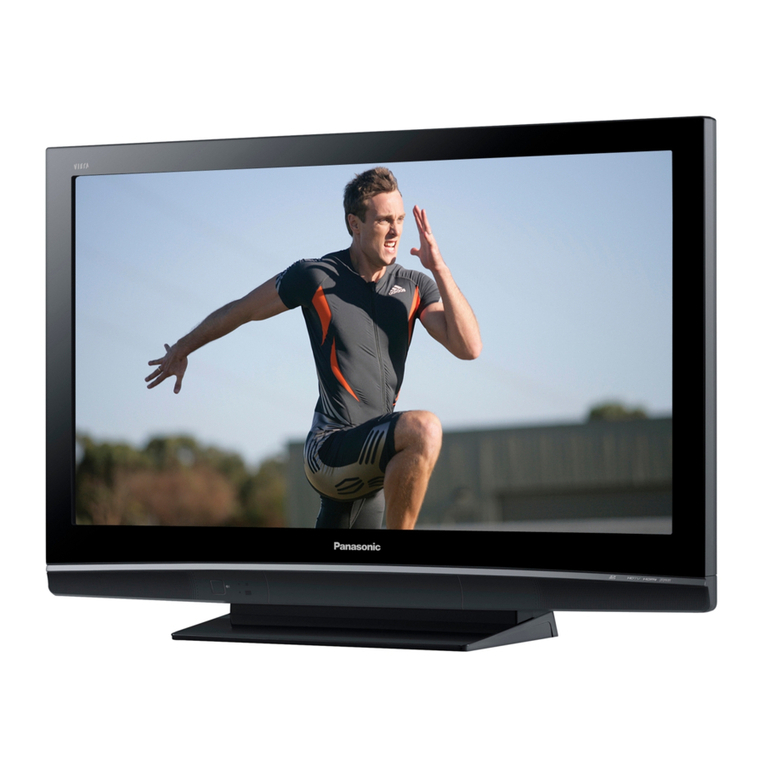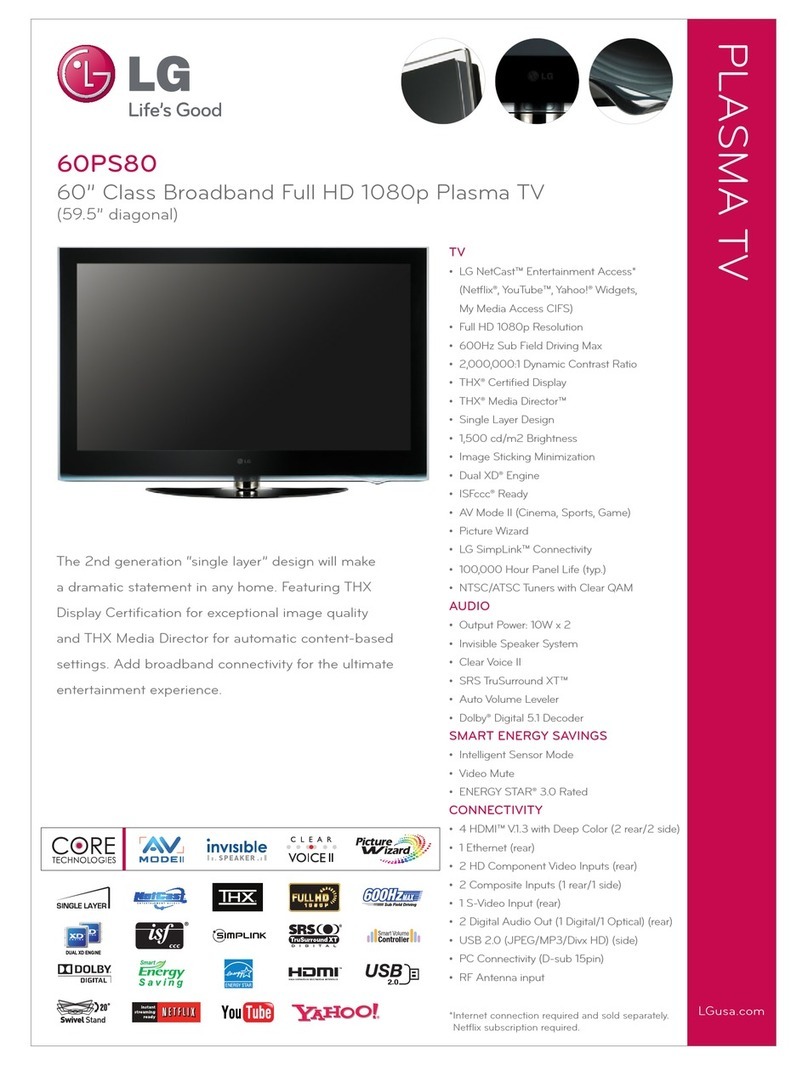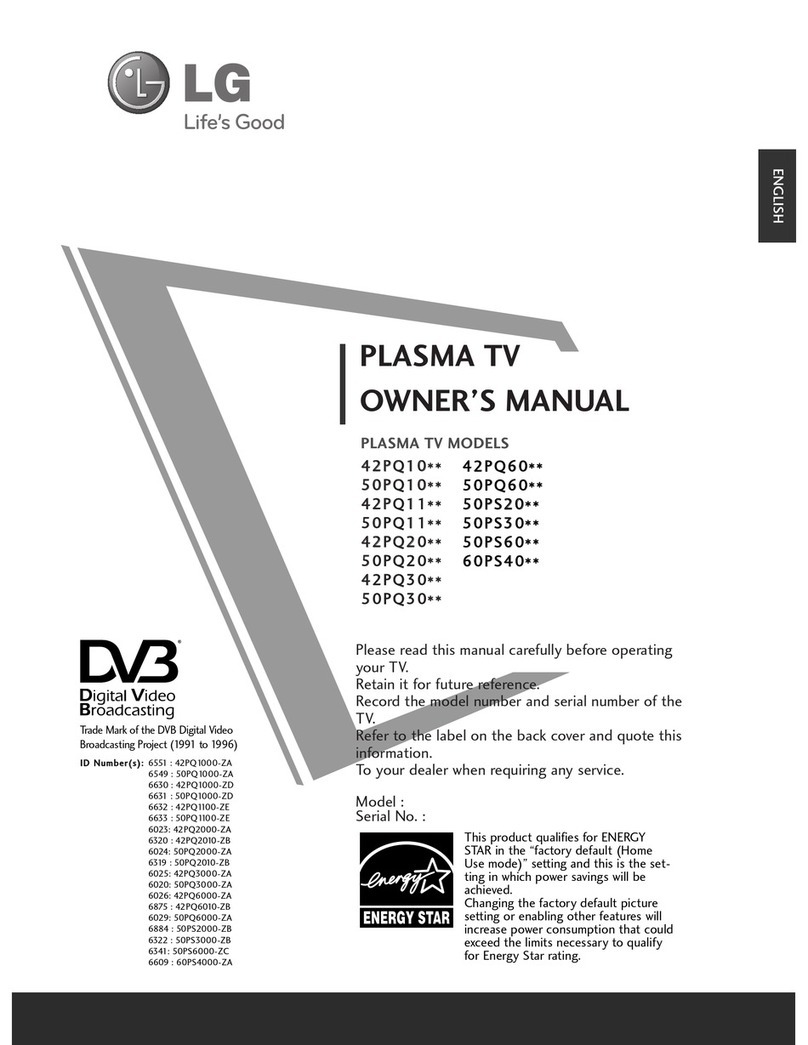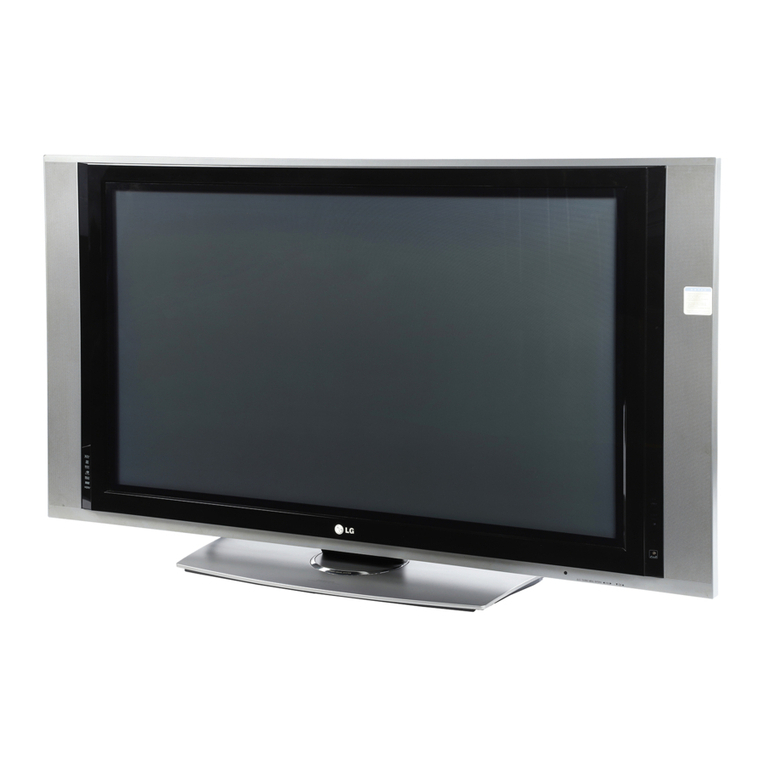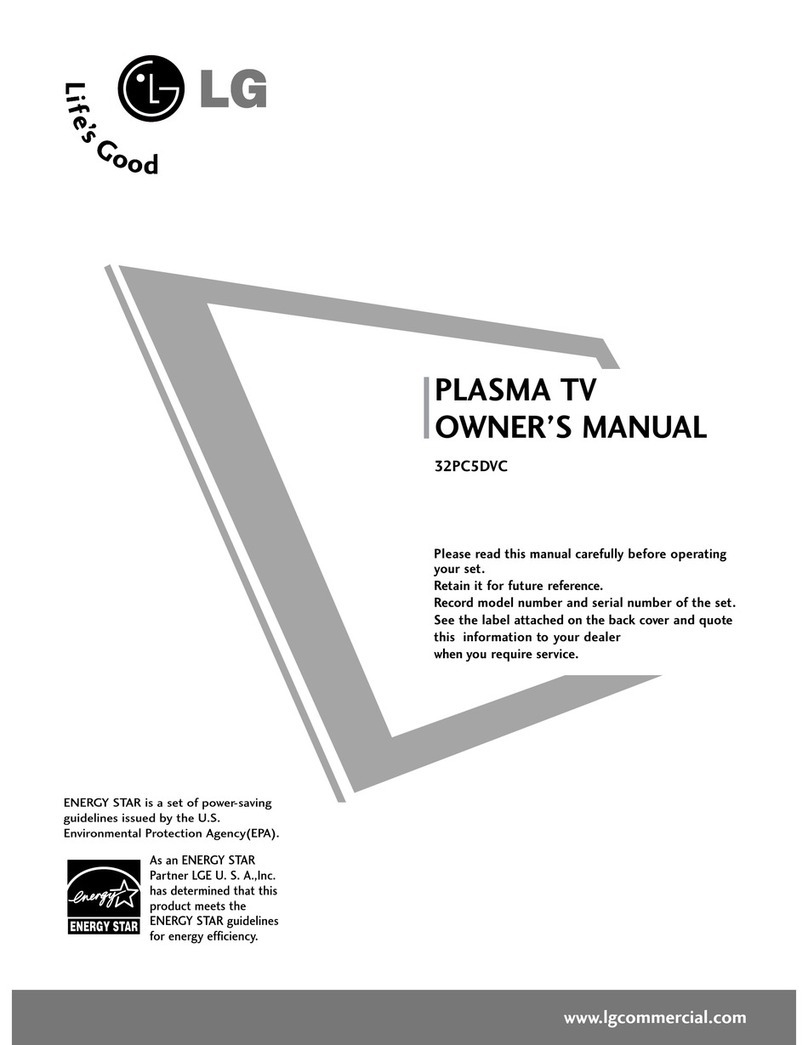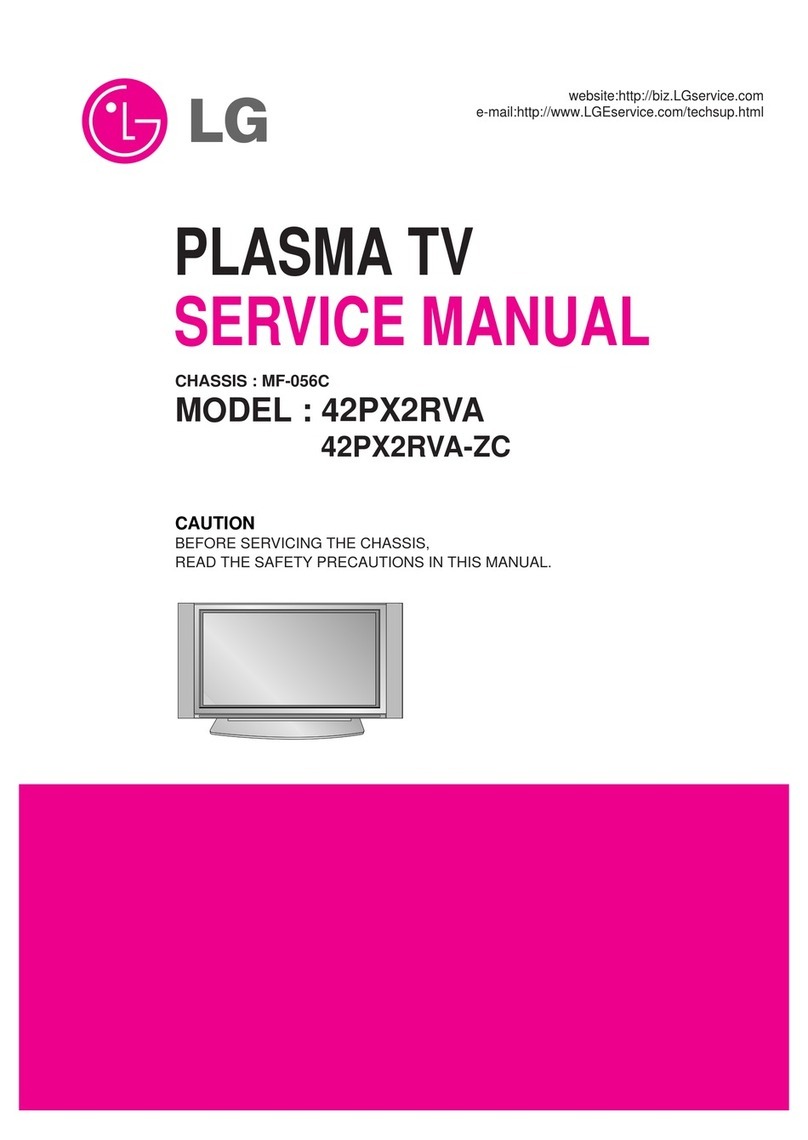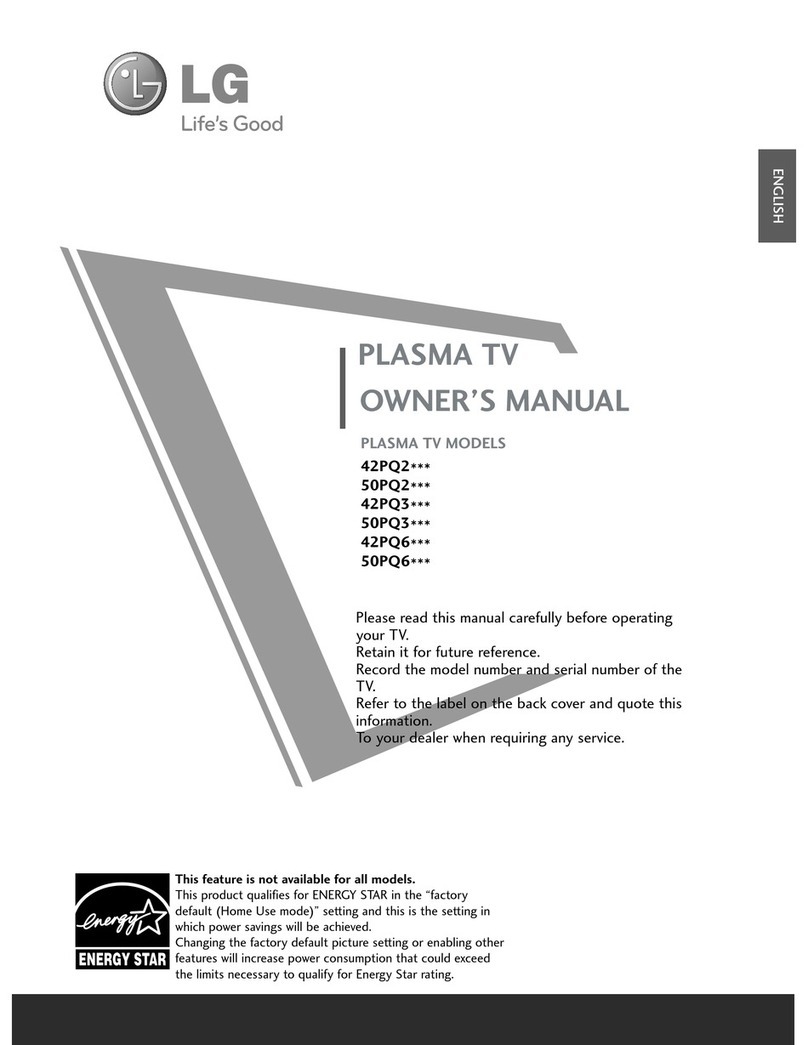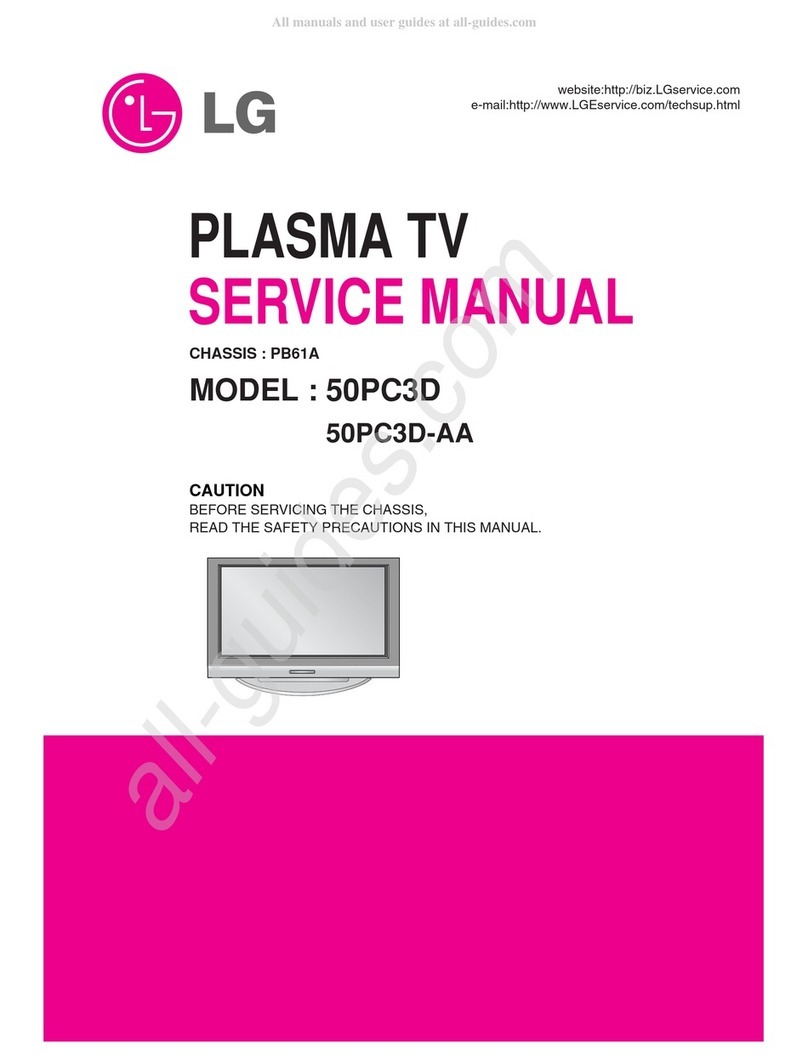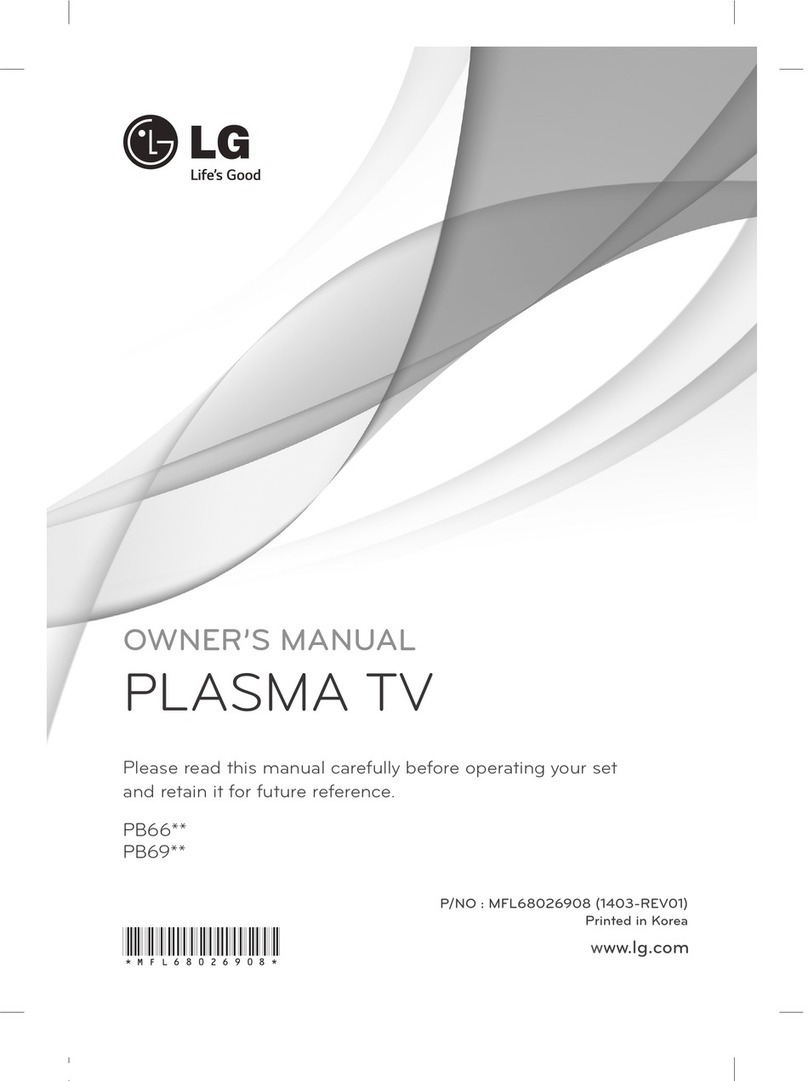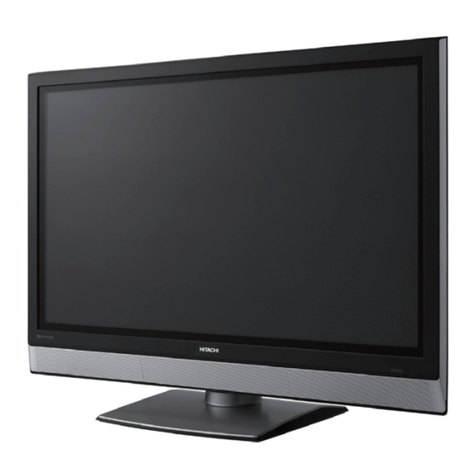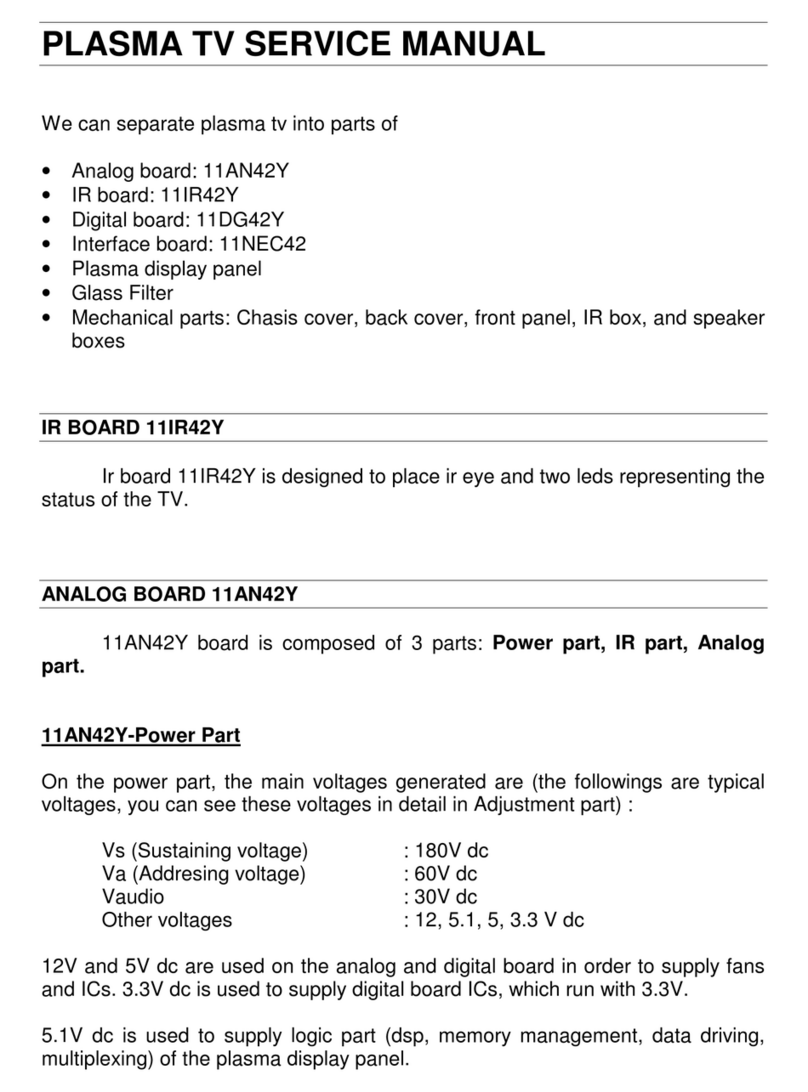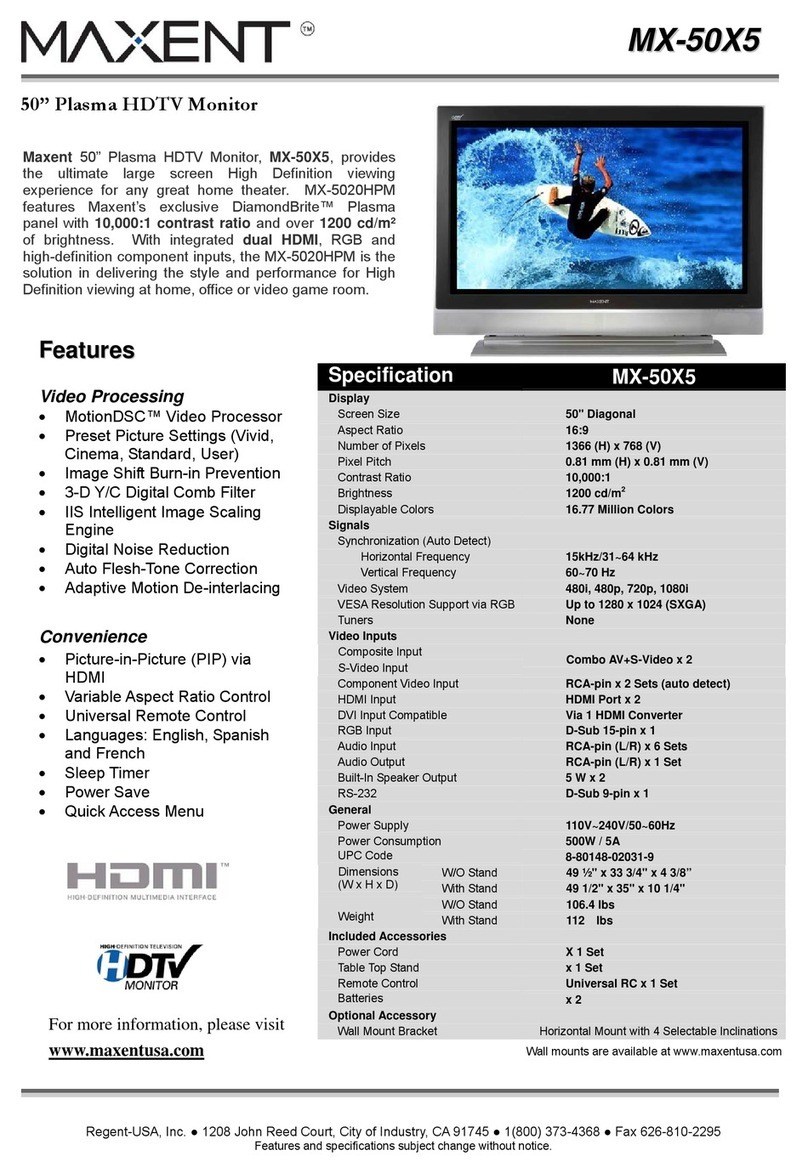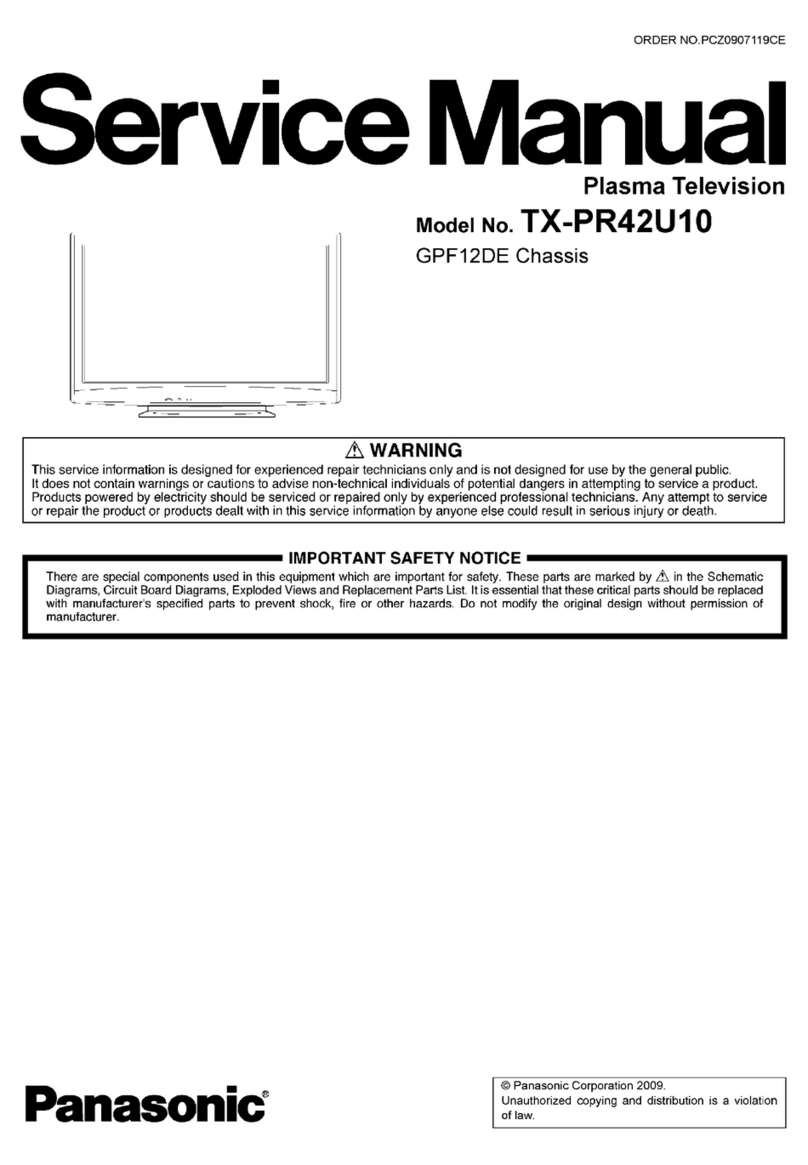7
Plasma Display Panel Troubleshooting - 2007
Switch Mode Power Supply (SMPS) Voltages
•VS196v used to drive the Horizontal Grid Voltage, Y SUS, and Z SUS. Measured from pins 8, 9,
and 10 of connector P805 to chassis ground. Adjusted at VR951
•VA
60v used to drive the Vertical Grid Voltage, X Boards and in the IPM Circuits to develop Y and Z
Drive waveforms. Measured from pins 1 and 2 of connector P805 to chassis ground. Adjusted at
VR901
•5v.DC
Used to develop bias voltages for the circuits on the Y SUS, Z SUS, X, and Control Boards.
Measured from pins 1 and 2 of connector P804 to chassis ground.
•3.3v
. Standby voltage applied to the Analog, and Digital Boards to Bias the Signal and Control
circuits. Measured at connector P803 at pins 1 and 2. to chassis ground. Adjusted at VR221.
•19v
Applied to the Analog Board and used for the Audio Output Supply, present in standby.
Measured at P802 pins 1 and 2 to chassis ground.
•12v
Used for supplying low voltage regulators on the Digital and Analog Boards, present in standby.
Measured at P803 pins 9 and 10 to chassis ground.
•6v
Applied to the Digital Board used for the signal processing circuits present in standby. Measured
at P803 pins 5 and 6 to chassis ground.
•S5v
Standby 5 volts at P800 pin 3 applied to the Digital Board.
•VS-ON
Switched 5 volts at P800 pin 5 present after power up to switch on the VA, VS, and 5V on
the Power Board from the Digital Board.
•5v-DSwitched 5v used to bring the Power Supply out of Deep Sleep Mode.
•5V-M
Needed to turn on the 5V-DC Supply.
Troubleshooting


